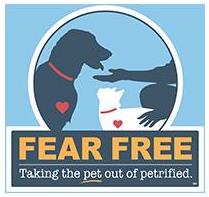
The First Two Weeks With Your New Dog
Congratulations on the new addition to your family! Your new dog will be a wonderful companion for years to come. It is important to recognize that first impressions are often lasting ones. If you follow these simple guidelines, your dog’s transition into your home will be a piece of cake for you and your new best friend.
- Teach your new dog the rules of your house from the beginning. In the words of Dr. Ian Dunbar, “If you want your dog to follow the rules of the house, by all means do not keep them a secret.” When your dog first gets home, he or she may be a little confused and unsure of the new living situation. Even though your home is undoubtedly more comfortable than the shelter, it is different, and different can be stressful. It is important to remember that dogs do not speak our language and will best understand your expectations through training and management. Training and management should begin the very moment your new dog arrives in your home.
Your instinct may be to give your new friend a few days to unwind and adjust before imposing rules and restrictions. While you may mean well, delaying training has the potential to be both frustrating and damaging. Right from the very first day, it is crucial to convey your expectations to the dog and to establish an errorless training system. If you do this, your dog can succeed in learning house rules right from the beginning. If you change the house rules a few days after your dog has arrived, he will not understand why things have changed. Your dog may have already formed new habits and will have a difficult time adjusting to yet another set of expectations. It is much more efficient to teach your dog everything you would like him of her to know from the outset.
- Try not to overwhelm your new dog with too much activity during this initial adjustment period (individual dog’s adjustment period will vary). It is very exciting to adopt a new family member. Of course you want to introduce her to all of your friends and family and of course you want to take your new pal everywhere! All this excitement however could be exceptionally stressful for your dog. Please keep in mind that even in the best of shelters your dog’s world was probably limited to a handful of environments and activities. It is best for your dog to spend the first couple of weeks quietly settling in and getting to know you. Limit introductions to just a few visitors, and preferably only one or two at a time. If your dog has time to become familiar with you and your home surroundings, she will be more confident when setting out on adventures beyond your immediate neighborhood.
- Keep your new dog confined or supervised at all times. This is the best way to keep your new friend (and house!) out of trouble when you are unable to monitor his actions. Keep him on a leash attached to you while in the house. Your dog requires a dog-proof, safe place: a “doggie den” -the equivalent of a toddler’s playpen- where he can rest and chew appropriate items in your absence. There are many options for your “doggie den,” but a crate or small room in your house is ideal. However, you may also choose an outside kennel run. Initially you must be around to gently redirect your dog when he chooses an inappropriate activity. If you are vigilant about supervising our dog and showing him what you expect, your dog will learn to settle down quietly, to chew only appropriate chew toys and eventually to become trustworthy in your absence.
Remember: always try to build good habits, because good habits are as hard to break as bad ones.
Call Gail Kulur, Make Sit Happen Dog Obedience, at 908-359-9228 or e-mail MakeSitHappen2@aol.com for training and behavior assistance!










